Python and Autonomous Underwater Vehicles
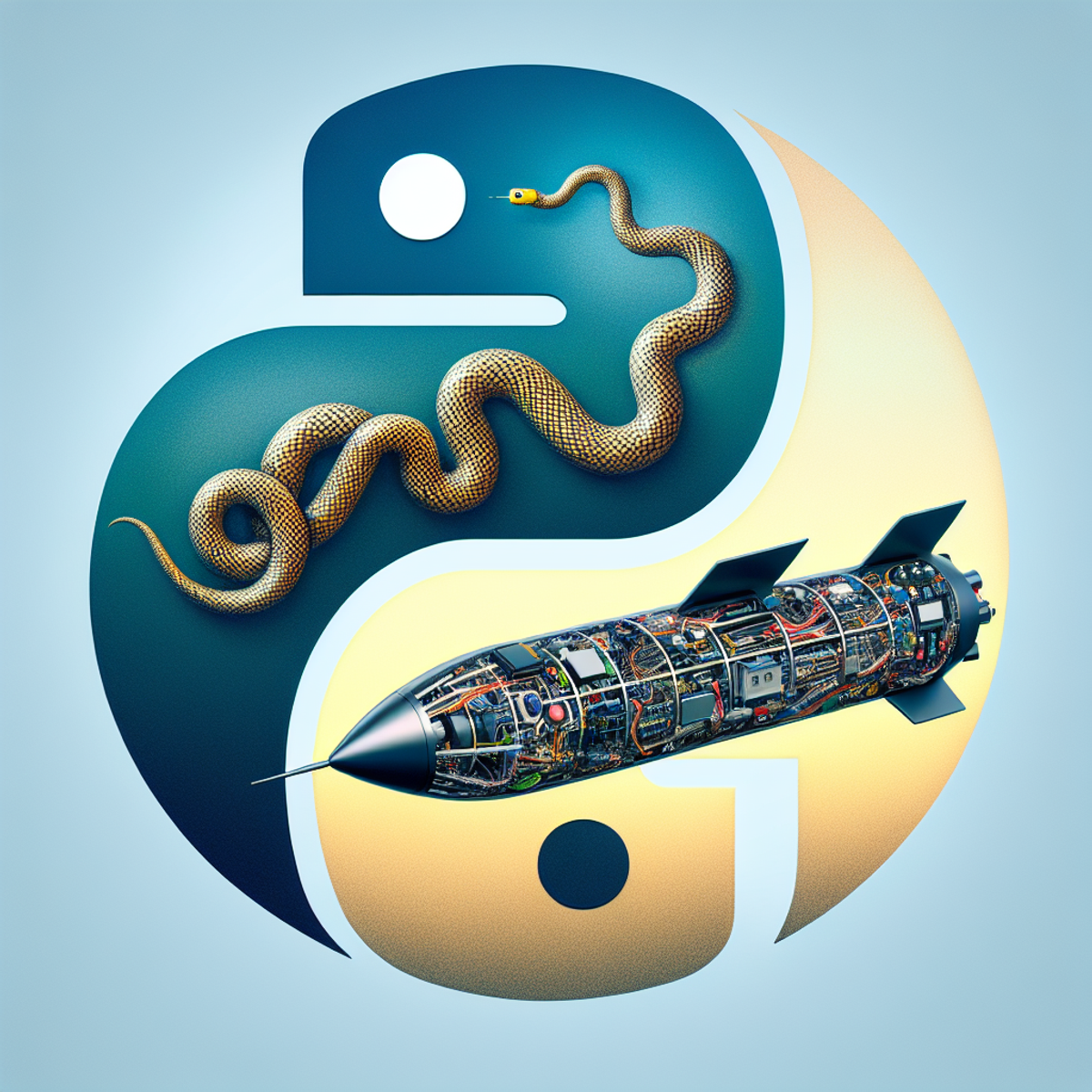
Python and Autonomous Underwater Vehicles
Introduction
Python is a versatile and powerful programming language that has found wide applications in the development of software and simulation tools for Autonomous Underwater Vehicles (AUVs). Its ease of use, extensive libraries, and robust frameworks make it an ideal choice for creating complex algorithms, processing sensor data, and simulating AUV behaviors in underwater environments. Python's flexibility and efficiency have made it a popular language for AUV development across various industries.
In this article, we will delve into the multifaceted role of Python in AUV development. We will explore its use in the creation of software and simulation tools for AUVs, its significance in data storage and analysis for AUV missions, and its integration with advanced technologies such as AI/ML for autonomous decision-making. Additionally, we will examine:
- The key components of AUVs
- Their diverse applications
- The pivotal role of software and simulation tools in missions such as deep-sea mapping and military surveillance operations
- The advancements in sensor technology within AUVs
- The potential of marine energy converters for extending AUV missions through docking and recharging
Finally, we will introduce the Python Vehicle Simulator as a valuable tool for testing and validating AUV systems. Through this exploration, we aim to provide insights into the dynamic synergy between Python and AUV technologies, encouraging further research and experimentation in this innovative domain.
The Use of Python in AUV Development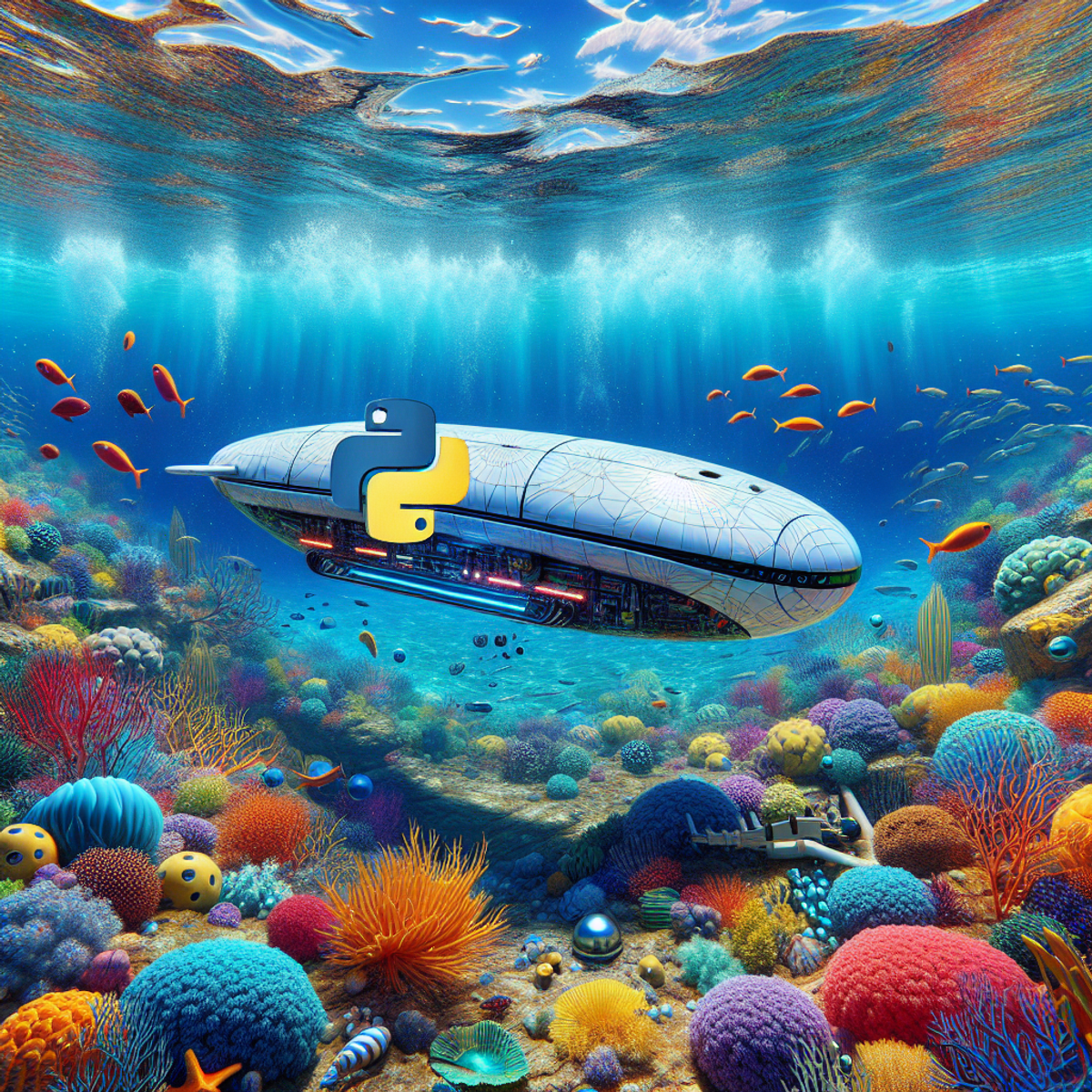
Examples of Software and Simulation Tools Developed Using Python for AUVs
Python has become integral in the development of software and simulation tools for Autonomous Underwater Vehicles (AUVs). Several notable examples showcase the versatility and effectiveness of Python in AUV development:
- Bluefin Simulation Tools: Bluefin, a prominent manufacturer of AUVs, leverages Python to create sophisticated simulation tools for testing and refining their underwater vehicles. These tools enable engineers to simulate various underwater scenarios, assess AUV performance, and validate control algorithms before deploying the vehicles in real-world missions.
- Open-source AUV Software: The open-source community has contributed significantly to AUV development by creating Python-based software frameworks tailored for underwater robotics. These frameworks provide a comprehensive suite of tools for simulating AUV behaviors, optimizing mission parameters, and analyzing sensor data, making them invaluable resources for researchers and developers alike.
- Customized Data Analysis Scripts: Python's flexibility and extensive libraries empower AUV engineers to develop customized data analysis scripts tailored to specific mission requirements. These scripts enable efficient processing of sensor data collected during AUV missions, facilitating in-depth analysis and extraction of valuable insights from the vast amounts of gathered information.
Role of Python in Data Storage, Sensor Sophistication, and AI/ML Technology in AUVs
Python plays a crucial role in various aspects of AUV technology beyond software development. Its impact extends to data storage, sensor sophistication, and the integration of Artificial Intelligence (AI) and Machine Learning (ML) technologies within AUV systems:
- Efficient Data Storage: Python's simplicity and robustness make it an ideal choice for managing large volumes of data generated by AUV sensors. Through Python-based databases and file systems, AUV operators can seamlessly store, retrieve, and process mission-critical data with minimal overhead.
- Sensor Fusion and Sophistication: By harnessing Python's computational capabilities, AUV designers can implement advanced sensor fusion techniques that integrate data from multiple sensors onboard the vehicle. This fusion enhances situational awareness, enabling precise navigation, obstacle avoidance, and environmental monitoring during underwater operations.
- AI/ML Integration: The adoption of AI/ML technologies is transforming the capabilities of AUVs, enabling autonomous decision-making based on real-time sensor inputs. Python serves as an enabler for developing AI/ML algorithms that empower AUVs to adapt to dynamic environments, recognize patterns in sensor data, and autonomously execute complex tasks with high precision.
In essence, Python not only empowers the creation of software tools but also contributes significantly to enhancing the overall intelligence and operational capabilities of Autonomous Underwater Vehicles.
The use of Python in AUV development fosters innovation across all facets of underwater robotics, from software simulation to advanced data processing and intelligent decision-making algorithms. Its versatility continues to drive significant advancements in this field, propelling the evolution of next-generation autonomous underwater technologies.
Role of Python in Data Storage, Sensor Sophistication, and AI/ML Technology in AUVs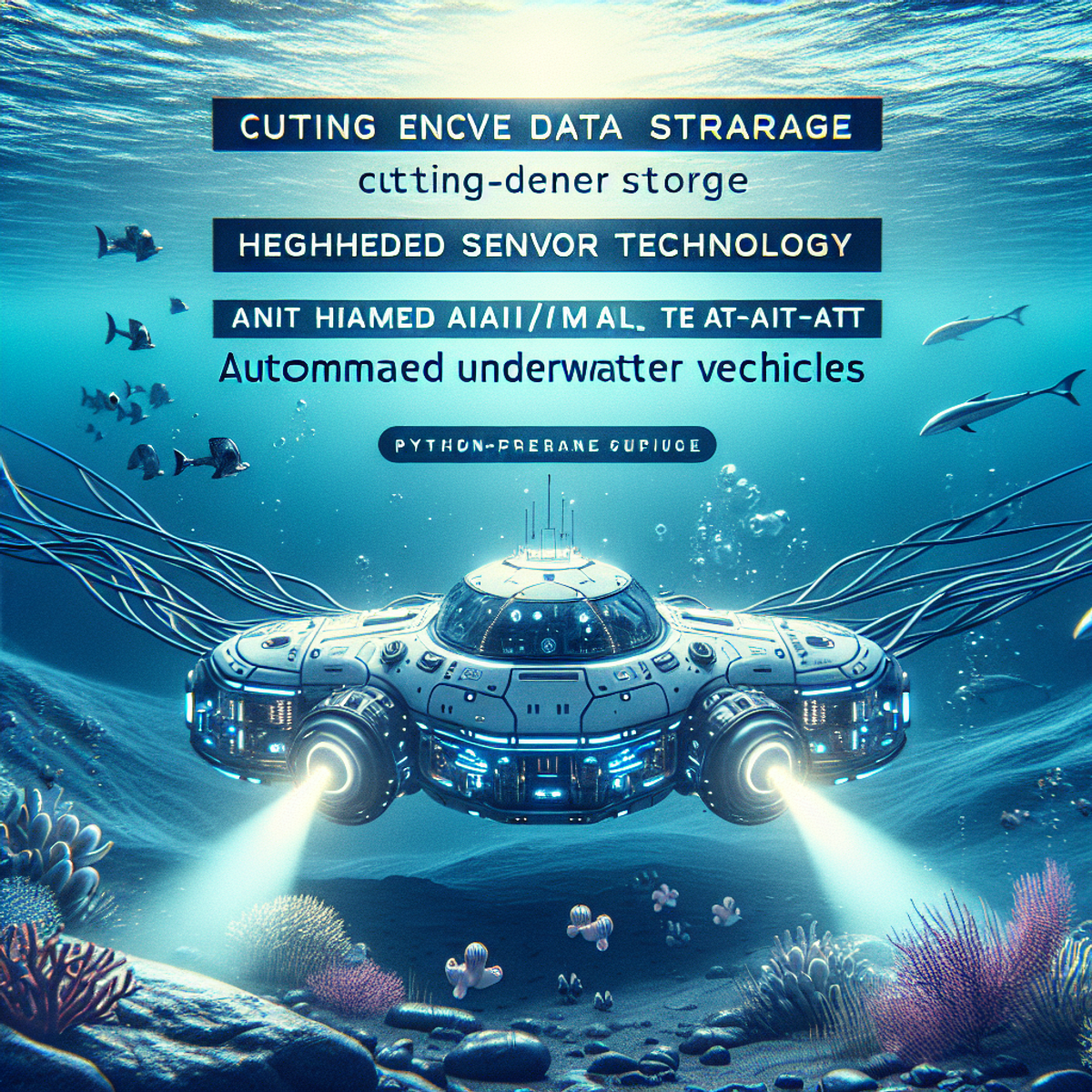
Python plays a crucial role in the development of autonomous underwater vehicles (AUVs), particularly in the areas of data storage, sensor sophistication, and AI/ML technology. Let's explore some of the advantages of using Python in AUV development and how it facilitates these essential aspects.
Flexibility and Ease of Use for Rapid Prototyping and Testing
Python is known for its flexibility and ease of use, making it an ideal choice for rapid prototyping and testing in AUV development. Its simple syntax and extensive libraries enable developers to quickly implement and experiment with different algorithms and functionalities. This flexibility allows for faster iterations during the design phase, leading to more efficient development processes.
Extensive Libraries and Frameworks Ecosystem for AUV Software Development
Python boasts a rich ecosystem of libraries and frameworks that cater specifically to AUV software development. These libraries provide ready-to-use tools for data processing, visualization, simulation, control systems, and more. For example:
- NumPy offers powerful numerical computing capabilities that are essential for processing sensor data collected by AUVs.
- Pandas provides efficient data structures and data analysis tools, making it easier to manage large datasets collected during AUV missions.
- Matplotlib enables the creation of high-quality visualizations that aid in understanding complex data patterns.
- OpenCV offers computer vision capabilities that can be utilized in tasks such as image processing or object detection.
- ROS (Robot Operating System) is a popular framework used in robotics, including AUVs. It provides a standardized communication interface between different components of an AUV system.
The availability of these libraries significantly accelerates the development process by providing pre-built modules that can be easily integrated into AUV software projects.
Utilizing Python for Sensor Data Processing and Fusion in AUV Systems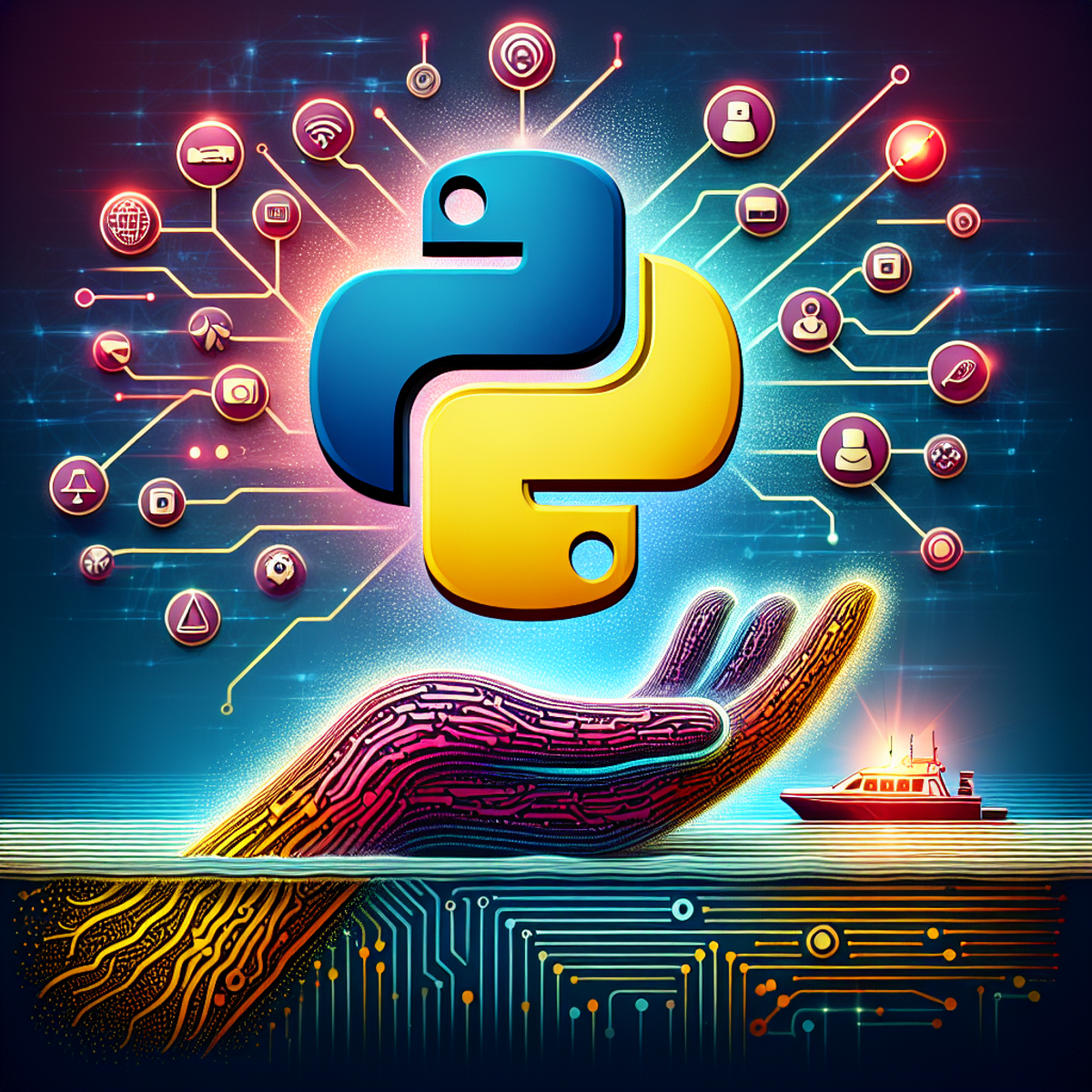
One of the critical functions of Python in AUV development is sensor data processing and fusion. AUVs are equipped with various sensors to collect data about the underwater environment, including depth, temperature, salinity, and acoustic signals. Python enables developers to process and fuse this sensor data efficiently.
Python's libraries, such as NumPy and SciPy, offer powerful tools for mathematical operations and signal processing. These libraries allow for advanced algorithms to be implemented for data filtering, noise reduction, and calibration. By leveraging Python's capabilities, developers can extract valuable insights from the sensor data collected by AUVs.
Sensor fusion is another crucial aspect of AUV development that Python supports. Sensor fusion involves integrating data from multiple sensors to obtain a more accurate representation of the environment. Python provides libraries like Kalman Filter and Particle Filter for implementing sensor fusion algorithms. These algorithms combine measurements from different sensors while considering their individual uncertainties to produce a more reliable estimate of the AUV's state.
Advancing AI/ML Technology in AUVs with Python
Python has become the language of choice for artificial intelligence (AI) and machine learning (ML) applications, including those used in AUVs. With its extensive ML libraries such as TensorFlow and PyTorch, Python enables developers to train sophisticated models for tasks like object detection, classification, localization, and path planning.
AI/ML technology plays a vital role in enabling autonomous decision-making in AUVs based on sensor inputs. By analyzing real-time sensor data using ML algorithms, AUVs can make intelligent decisions regarding navigation, obstacle avoidance, target identification, and mission planning. Python's support for AI/ML empowers developers to implement these advanced capabilities seamlessly.
Python offers numerous advantages in AUV development when it comes to data storage, sensor sophistication, and AI/ML technology:
- Flexibility and ease of use for rapid prototyping and testing
- Extensive libraries and frameworks ecosystem for AUV software development
- Efficient sensor data processing and fusion capabilities
- Advanced AI/ML technology for autonomous decision-making
These advantages make Python the go-to programming language for developing innovative AUV solutions that push the boundaries of what these underwater robots can achieve.
Understanding Autonomous Underwater Vehicles (AUVs)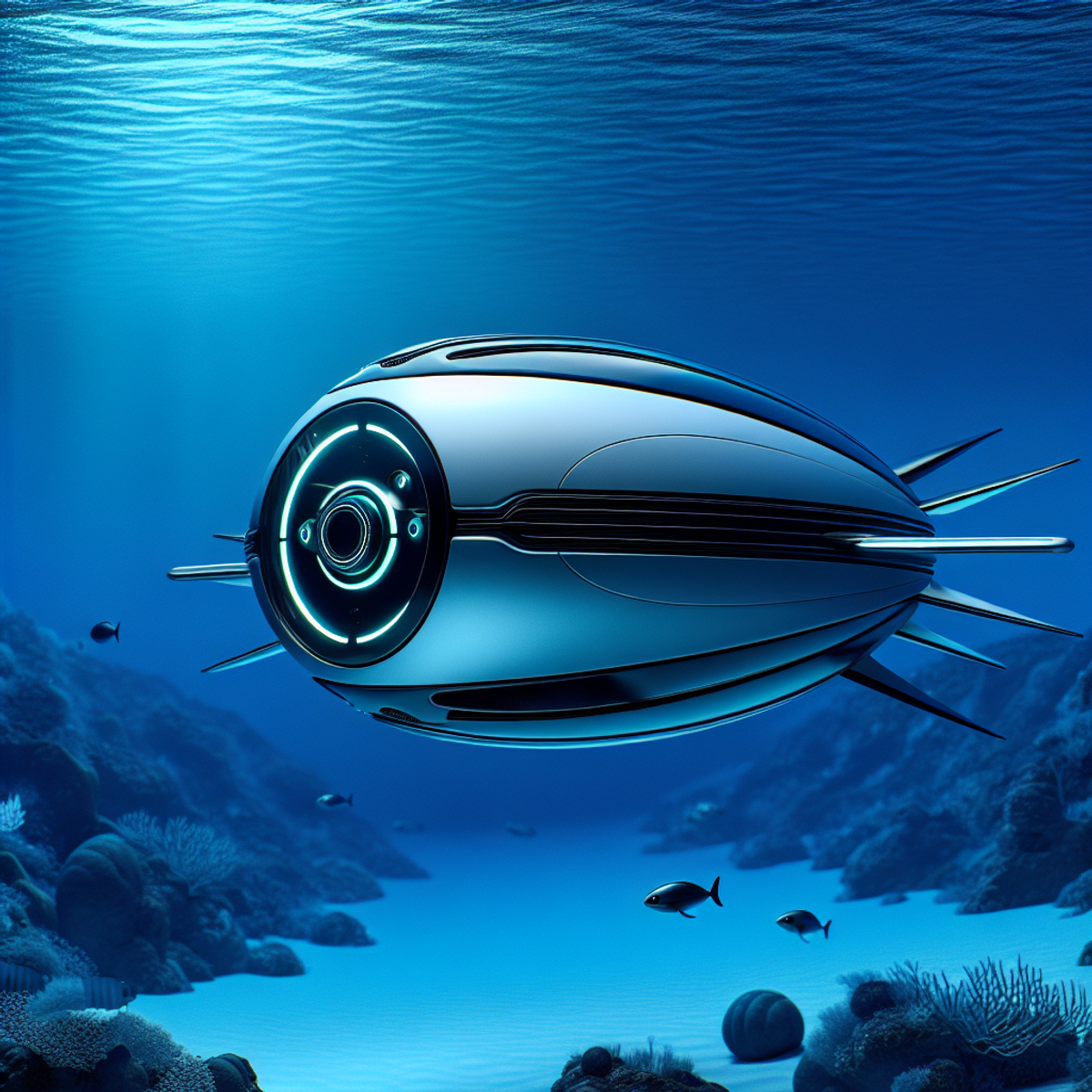
Autonomous Underwater Vehicles (AUVs) are underwater robots that operate without the need for human intervention. They are designed to perform various tasks in underwater environments, such as deep-sea mapping and military surveillance. AUVs are equipped with advanced technology and software systems that enable them to navigate autonomously and collect valuable data.
Definition and Key Components of Autonomous Underwater Vehicles (AUVs)
AUVs are self-contained vehicles that can operate independently underwater, without being tethered to a surface vessel or control station. They are equipped with a wide range of sensors, propulsion systems, and onboard computers to facilitate their autonomous operation.
The key components of an AUV include:
- Hull: The hull of an AUV is designed to withstand the high-pressure conditions of underwater environments. It is typically made of strong and durable materials such as titanium or composite materials.
- Propulsion System: AUVs use different types of propulsion systems depending on their size and intended application. Common propulsion methods include electric thrusters, propellers, or even fins for maneuverability.
- Sensors: AUVs are equipped with various sensors to collect data about their surroundings. These sensors may include sonar systems for mapping the seafloor, cameras for capturing images or videos, and environmental sensors for measuring parameters like temperature, salinity, and pressure.
- Navigation Systems: AUVs rely on navigation systems to determine their position and orientation in the water. These systems utilize a combination of acoustic positioning, inertial navigation, and GPS technology to ensure accurate navigation.
- Communication Systems: AUVs often have communication systems that allow them to transmit data back to a control station or receive commands remotely if necessary.
Different Types and Features of AUVs
There are various types of AUVs available today, each designed for specific tasks and operating conditions. Some common types of AUVs include:
- Survey AUVs: These AUVs are primarily used for mapping and surveying underwater environments. They are equipped with high-resolution sonar systems to create detailed maps of the seafloor.
- Environmental AUVs: Environmental AUVs are used for collecting data about the ocean environment. They are equipped with sensors to measure parameters such as temperature, salinity, and dissolved oxygen levels.
- Military AUVs: Military AUVs are designed for surveillance and reconnaissance missions. They can be used for underwater mine detection, intelligence gathering, or monitoring enemy activities in coastal regions.
- Scientific Research AUVs: Scientific research AUVs are used by researchers to study marine ecosystems, collect biological samples, or monitor underwater habitats.
Each type of AUV may have specific features tailored to its intended application. For example, survey AUVs may have advanced sonar systems for precise mapping, while military AUVs may have stealth capabilities and advanced communication systems.
Various Applications of AUVs
AUVs have a wide range of applications across different industries and sectors. Some notable applications include:
- Deep-Sea Mapping: AUVs equipped with sonar systems are used to create detailed maps of the ocean floor. These maps are essential for understanding underwater topography, locating submerged objects, and identifying potential hazards.
- Marine Biology Research: Scientists use AUVs to study marine ecosystems and collect data on marine life. AUVs can capture images or videos of underwater habitats, track animal movements, and collect water samples for analysis.
- Underwater Infrastructure Inspection: AUVs can inspect underwater structures such as oil rigs, pipelines, or offshore wind farms. They can assess the condition of these structures without the need for human divers, reducing the risks associated with underwater inspections.
- Military Surveillance: AUVs play a crucial role in military surveillance operations. They can be deployed for underwater mine detection, monitoring enemy activities in coastal regions, or gathering intelligence in submerged environments.
Importance of Software and Simulation Tools in AUV Missions
Software and simulation tools are essential components of AUV missions. They enable AUV operators to plan and simulate missions, analyze collected data, and optimize the performance of the AUVs. Python, with its versatility and extensive libraries, plays a significant role in developing software for AUVs.
These software tools provide functionalities such as:
- Mission planning: Operators can use software tools to define mission parameters, waypoints, and desired data collection objectives.
- Sensor integration: Software tools allow for the integration of various sensors into the AUV system. Python can be used for sensor data processing and fusion, ensuring accurate and reliable data collection.
- Data analysis: Python offers powerful libraries for data analysis and visualization, enabling operators to extract valuable insights from the collected data.
- Autonomous navigation: AUVs rely on sophisticated algorithms developed using Python to navigate autonomously and avoid obstacles in real-time.
Simulation tools are equally important in AUV development as they allow operators to test and validate the behavior of AUV systems before deploying them in real-world scenarios. These simulations help identify potential issues, fine-tune control algorithms, and ensure safe and efficient operation of AUVs.
Sensors and Technology Advancements in AUVs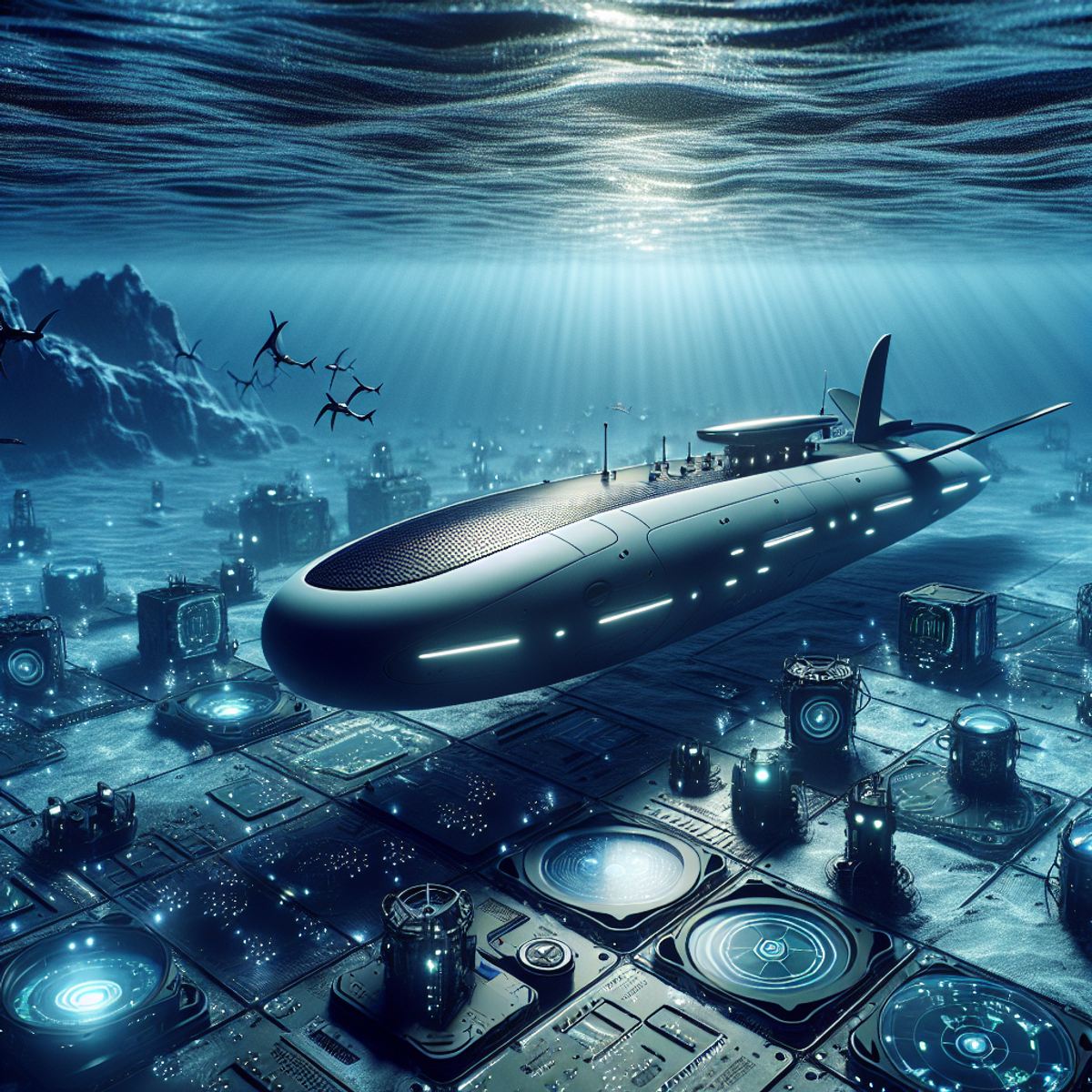
The advancement of sensors and technology plays a crucial role in the capabilities of Autonomous Underwater Vehicles (AUVs). These technologies enable AUVs to navigate, collect data, and make autonomous decisions in complex underwater environments. Let's explore the significance of sensors, technology advancements, and the integration of AI/ML in enhancing the operational efficiency of AUVs.
1. Sensors for Ocean Characterization
AUVs are equipped with a diverse array of sensors that facilitate the characterization of ocean environments. These sensors include:
- Acoustic devices for measuring water properties, such as temperature, salinity, and pressure.
- Optical sensors for assessing water clarity and biological activity.
The data collected from these sensors is instrumental in understanding oceanographic phenomena and ecosystem dynamics.
2. Role of Sonar Sensors
Sonar sensors are integral to AUV operations, allowing them to:
- Create detailed maps of the ocean floor
- Detect underwater objects
By emitting sound pulses and analyzing the reflected signals, AUVs can generate high-resolution maps and navigate through challenging terrains with precision. The utilization of sonar technology enhances the mapping capabilities of AUVs, enabling them to contribute to scientific research and underwater surveying.
3. Integration of AI/ML Technology
AI/ML technology plays a pivotal role in processing the vast amount of data acquired by AUV sensors. Through machine learning algorithms, AUVs can:
- Autonomously analyze sensor inputs to recognize patterns
- Identify objects of interest
- Adapt their navigation strategies based on environmental changes
This capability enhances the decision-making processes of AUVs, allowing them to efficiently respond to dynamic underwater conditions.
4. Enhanced Autonomy through Sensor Fusion
Sensor fusion techniques enable AUVs to integrate data from multiple sensors, creating a comprehensive understanding of their surroundings. By combining information from:
- Acoustic sensors
- Optical sensors
- Navigational sensors
AUVs can enhance their situational awareness and make informed decisions regarding:
- Path planning
- Obstacle avoidance
- Target recognition
The fusion of sensor data contributes to the overall autonomy and operational effectiveness of AUV missions.
5. Advancements in Underwater Communication Technology
Effective communication is essential for transmitting sensor data collected by AUVs to remote operators or base stations. Recent advancements in underwater communication technologies have enabled AUVs to establish reliable data links while operating at significant depths. Acoustic modems and networking protocols contribute to real-time data transmission, enabling researchers and mission controllers to monitor AUV activities and receive valuable insights from underwater expeditions.
The continuous development of sensor technologies, coupled with the integration of AI/ML capabilities, significantly enhances the performance and autonomy of Autonomous Underwater Vehicles. These advancements underscore the potential for AUVs to contribute meaningfully to scientific research, environmental monitoring, and commercial applications in marine industries.
Co-designing Marine Energy Converters for AUV Docking and Recharging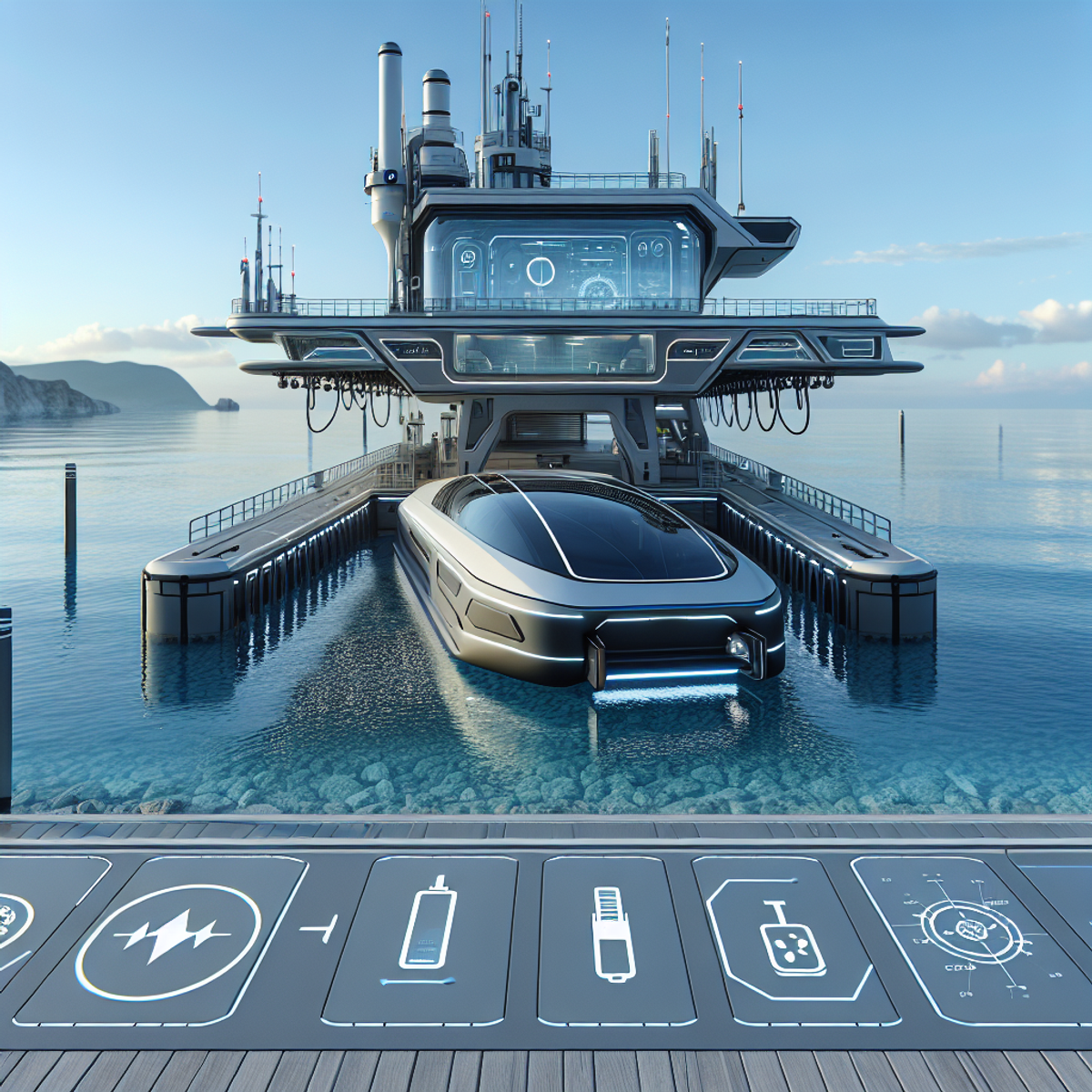
The development of marine energy converters has gained significant attention in the field of Autonomous Underwater Vehicles (AUVs). These converters offer a sustainable solution for prolonged AUV missions by enabling docking and recharging capabilities. Through co-design efforts, researchers are exploring the integration of marine energy converters with AUVs to enhance their operational efficiency and endurance.
Exploration of Marine Energy Converters for AUV Missions
Marine energy converters harness the power of ocean waves or currents to generate electricity. By utilizing this renewable energy source, AUVs can extend their mission duration without the need for external power sources or frequent trips to the surface. The integration of marine energy converters with AUVs involves several key aspects:
- Multi-body Hydrodynamic Modeling: To ensure effective interaction between the marine energy converter and the AUV, researchers employ multi-body hydrodynamic modeling techniques. These simulations help in understanding the dynamic behavior of the system under different sea conditions and optimizing its design for efficient energy conversion.
- Active Control: Active control systems play a crucial role in maintaining stable and precise docking between the AUV and the marine energy converter. By continuously adjusting control parameters, such as thruster forces and angles, these systems ensure a secure connection between the two entities, facilitating efficient power transfer.
- Autonomy: The integration of marine energy converters requires advanced autonomy capabilities in AUVs. These autonomous systems enable the AUV to navigate towards the converter, establish a connection, and initiate the recharging process without human intervention. Sophisticated algorithms and sensor fusion techniques are employed to achieve reliable autonomy in challenging underwater environments.
Benefits of Co-designing Marine Energy Converters with AUVs
The co-design approach offers several advantages when integrating marine energy converters with AUVs:
- Extended Mission Endurance: By harnessing renewable energy sources, AUVs equipped with marine energy converters can significantly extend their mission duration. This capability is particularly valuable for long-term environmental monitoring, underwater exploration, and surveillance applications.
- Reduced Environmental Impact: Marine energy converters provide a sustainable alternative to traditional power sources, reducing carbon emissions and minimizing the environmental impact of AUV operations. By utilizing clean and renewable energy, these systems contribute to preserving marine ecosystems while enabling prolonged missions.
- Increased Operational Flexibility: AUVs integrated with marine energy converters gain increased operational flexibility by eliminating the need for frequent resurfacing or manual battery replacements. This allows them to operate autonomously in remote locations for extended periods, collecting crucial data and performing complex tasks.
Future Developments and Challenges
While the co-design of marine energy converters with AUVs holds immense potential, several challenges and areas for further development remain:
- Efficiency Optimization: Researchers are continuously working on optimizing the efficiency of marine energy converters to maximize power generation from ocean waves or currents. Improving conversion efficiency is crucial for ensuring sustained power supply to AUVs during docking and recharging operations.
- Robust Docking Mechanisms: Developing robust docking mechanisms that can withstand challenging sea conditions is essential for reliable AUV docking and recharging. These mechanisms must be capable
Python Vehicle Simulator for AUV Systems Testing and Validation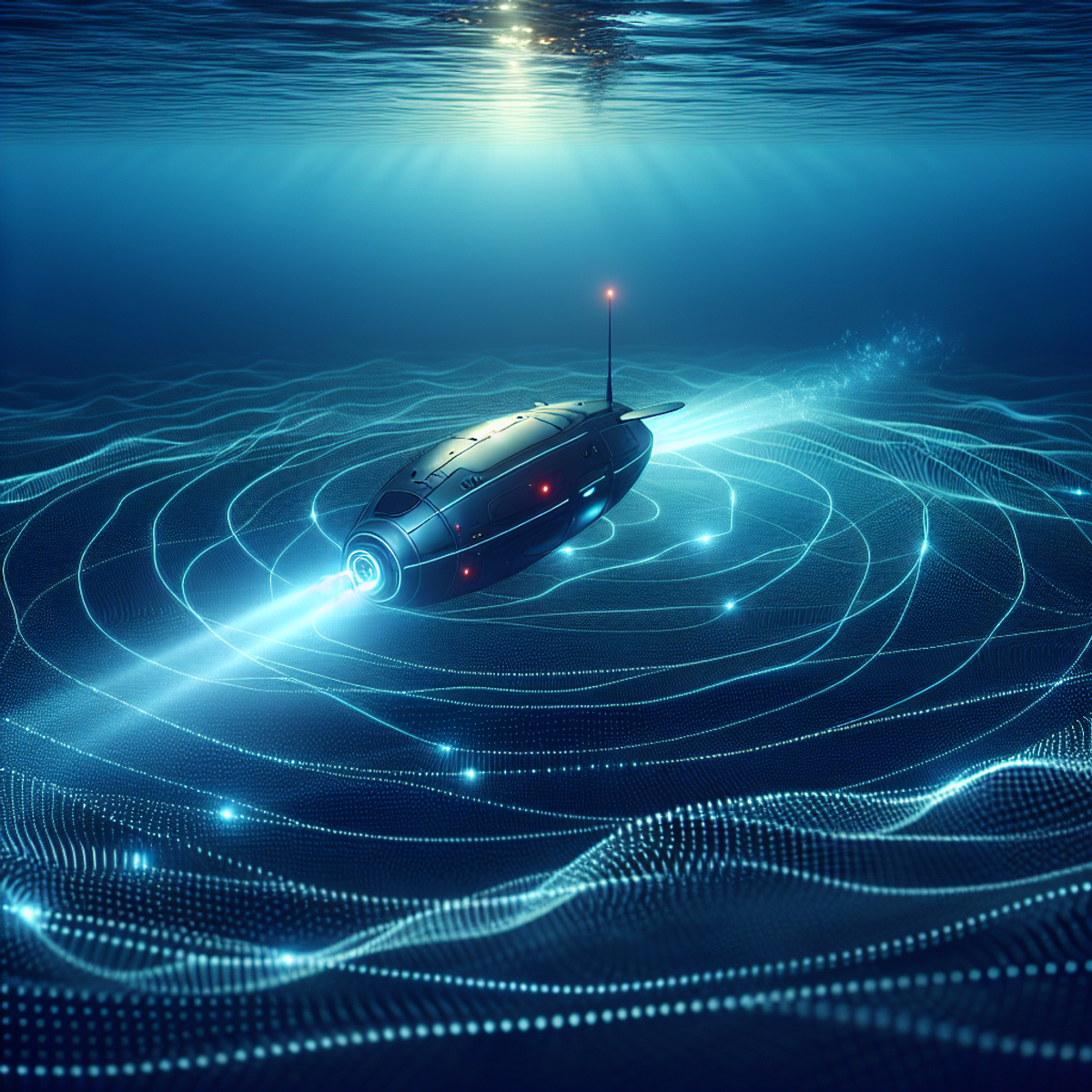
The Python Vehicle Simulator is a valuable tool for simulating the behaviors of Autonomous Underwater Vehicles (AUVs) and evaluating control algorithms. This section will provide an overview of the Python Vehicle Simulator and its significance in the development and testing of AUV systems.
Simulating AUV Behaviors
The Python Vehicle Simulator allows engineers and researchers to create virtual environments that replicate real-world underwater conditions. By defining AUVs as Python "objects" with specific characteristics, such as dimensions, mass, speed, and autopilot features, the simulator enables users to model the movements and interactions of these vehicles in various scenarios.
Evaluating Control Algorithms
One of the key functionalities of the Python Vehicle Simulator is its capability to assess different control algorithms for AUVs. Engineers can implement and test control strategies within the simulated environment to analyze their effectiveness in guiding AUVs through complex missions, avoiding obstacles, and achieving predefined objectives.
Integrated Marine Systems Simulation
In addition to simulating individual AUV behaviors, the Python Vehicle Simulator offers a platform for integrated marine systems simulation. This means that users can model not only the AUV itself but also its interactions with other elements in the marine environment, such as marine energy converters, docking stations, or communication networks.
Advantages of Using Python
Python's flexibility and extensive libraries make it an ideal programming language for developing vehicle simulators. Its rich ecosystem of scientific computing tools, visualization libraries, and machine learning frameworks provides a solid foundation for creating sophisticated simulations that accurately represent real-world dynamics.
Realistic Testing Scenarios
By leveraging the capabilities of the Python Vehicle Simulator, researchers can design realistic testing scenarios that encompass a wide range of environmental factors and operational challenges. These simulations are crucial for validating AUV systems under diverse conditions and refining their performance in complex underwater settings.
Future Development Potential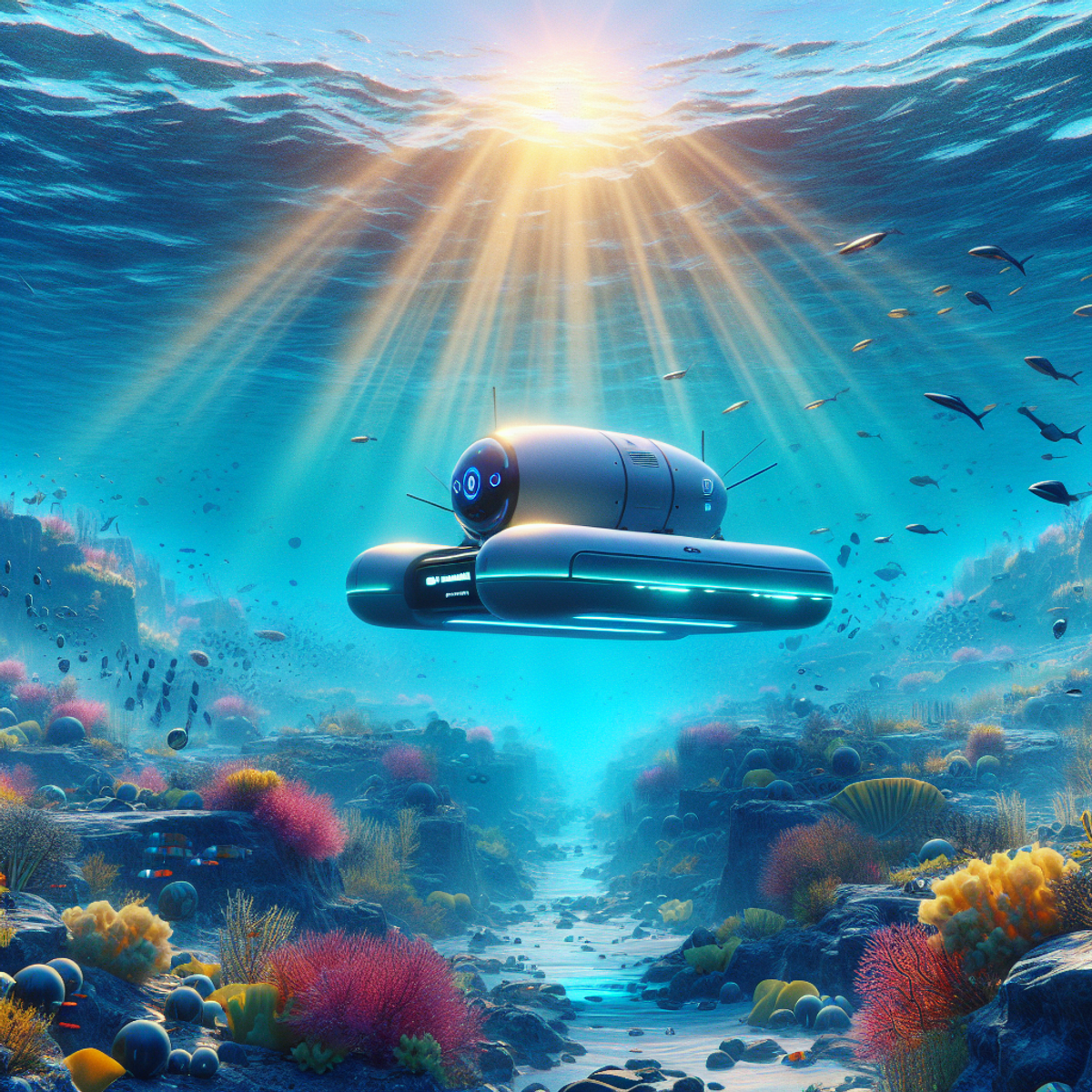
As advancements in AUV technology continue to unfold, the Python Vehicle Simulator is poised to evolve alongside these developments. The integration of new sensor technologies, propulsion systems, and autonomous decision-making algorithms into the simulator will enable comprehensive testing of next-generation AUV platforms.
The Python Vehicle Simulator plays a pivotal role in accelerating the progress of AUV research and development by providing a versatile platform for testing and validating innovative concepts. Its capacity to replicate authentic underwater environments while accommodating diverse control strategies positions it as an indispensable resource for engineers working on cutting-edge AUV projects.
Conclusion
The combination of Python and Autonomous Underwater Vehicles (AUVs) opens up exciting opportunities for further research and experimentation. As you dive deeper into this field, you'll realize the huge potential of Python in improving AUV technologies, from developing software to creating simulation tools.
Exploring New Horizons
- Groundbreaking Innovations: Embracing the connection between Python and AUVs can lead to revolutionary ideas in underwater robotics and data gathering. By continuously exploring and experimenting, you can discover new ways to use Python for enhancing AUV capabilities.
- Versatile Applications: Consider the various roles that Python can play in refining AUV systems as you navigate this intersection. From storing and analyzing data to improving sensors and integrating AI/ML, Python is a flexible tool for making Autonomous Underwater Vehicles smarter and more efficient.
Pioneering Advancements
- Software Development: By focusing on creating software and simulation tools using Python, you have the chance to pioneer advancements that push AUV technology forward. Python's adaptability and reliability allow you to develop customized solutions for the unique challenges faced by AUV missions.
- Sustainable Operations: Python's innovative potential goes beyond traditional uses. It also offers opportunities to co-design marine energy converters for eco-friendly AUV operations. By working on this area, you can contribute to the development of efficient docking and recharging methods that extend the endurance and functionality of Autonomous Underwater Vehicles.
Embracing Collaboration
- Key Role of Collaboration: Collaboration is essential in your journey towards Python-driven innovations in AUV development. Engaging with experts from different fields, researchers, and industry professionals enables you to exchange ideas, benefit from diverse perspectives, and collectively push the boundaries of what can be achieved in this ever-evolving field.
- Complex Problem Solving: Through fostering a collaborative environment, you can tap into collective expertise to address complex challenges such as autonomous decision-making based on sensor inputs and refining vehicle behaviors through comprehensive simulations.
Continual Exploration
- Ongoing Journey: The exploration of Python and AUV technologies is a continuous process of discovery. It requires a mindset of curiosity and perseverance as you navigate through unfamiliar territory, uncovering insights that elevate the capabilities and impact of Autonomous Underwater Vehicles.
By embracing the possibilities offered at this intersection, you are poised to contribute to transformative advancements in AUV development while expanding your own horizons within this captivating field.
FAQs (Frequently Asked Questions)
What is the role of Python in AUV development?
Python plays a crucial role in AUV development by offering advantages such as flexibility and ease of use for rapid prototyping and testing, extensive libraries and frameworks ecosystem for AUV software development, and its role in data storage and analysis for AUV missions.
Can you provide examples of software and simulation tools developed using Python for AUVs?
Python has been utilized in the development of software and simulation tools for AUVs, particularly in data storage, sensor sophistication, AI/ML technology, and marine systems simulation. It has also played a significant role in sensor data processing and fusion in AUV systems.
What are Autonomous Underwater Vehicles (AUVs) and their key components?
Autonomous Underwater Vehicles (AUVs) are underwater robots designed for various applications such as deep-sea mapping and military surveillance. They consist of different types with specific features tailored to their intended functions.
How does Python contribute to the advancement of sensor technology in AUVs?
Python contributes to the advancement of sensor technology in AUVs by enabling AI/ML technology for autonomous decision-making based on sensor inputs. It facilitates the processing and fusion of sensor data to enhance the capabilities of AUV systems.
What is the significance of marine energy converters for prolonged AUV missions?
Marine energy converters offer a sustainable solution for prolonged AUV missions through docking and recharging. By utilizing multi-body hydrodynamic modeling, active control, and autonomy, they enable efficient energy replenishment for AUVs.
How is the Python Vehicle Simulator utilized for AUV systems testing and validation?
The Python Vehicle Simulator serves as a tool for simulating AUV behaviors and evaluating control algorithms. It focuses on marine systems simulation, specifically targeting the Remus 100 AUV with considerations for dimensions, mass, speed, and autopilot features.


Comments
Post a Comment